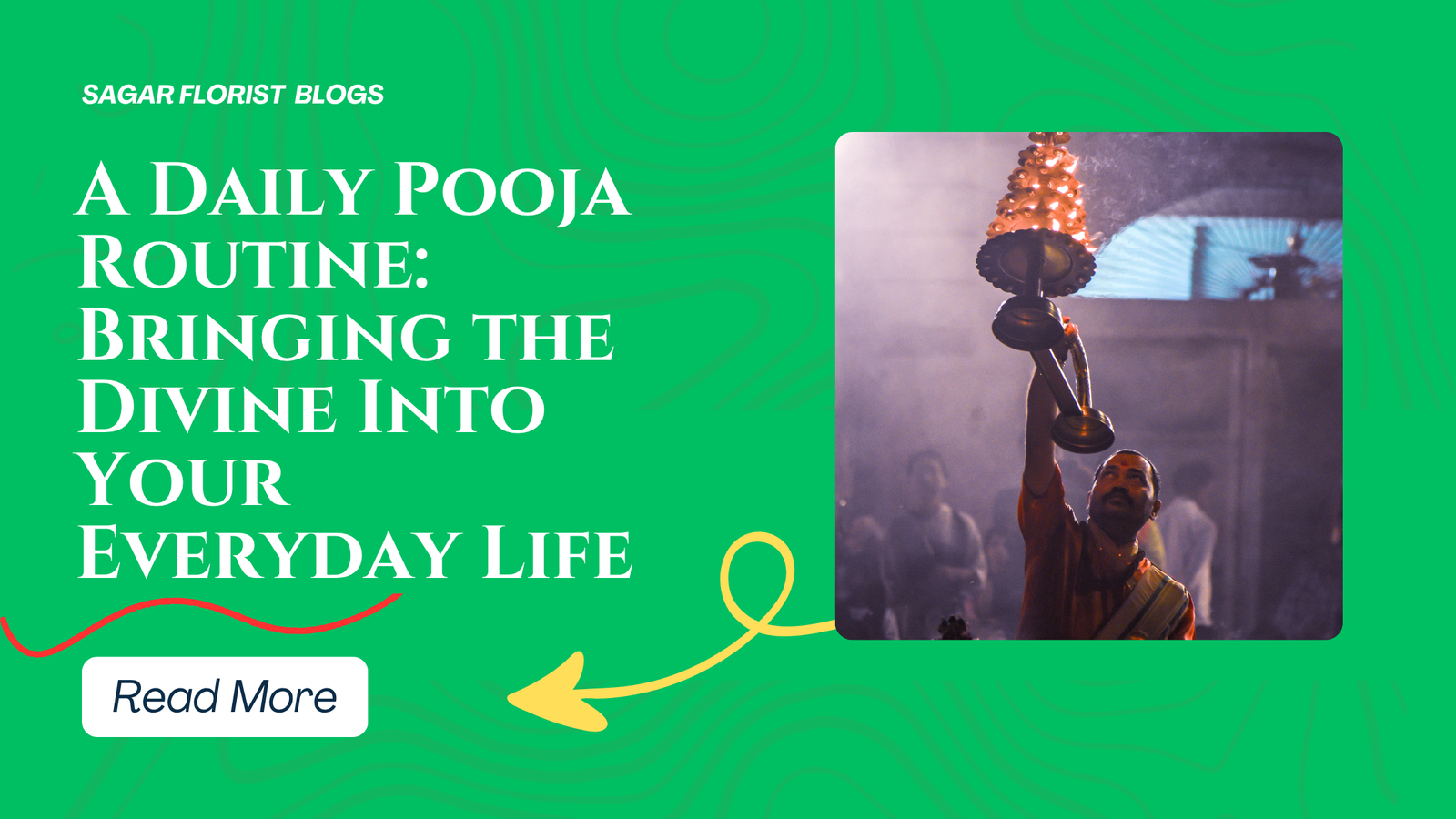A Daily Pooja Routine: Bringing the Divine Into Your Everyday Life
In the fast-paced rhythm of modern life, setting aside time for daily pooja (worship) is a sacred pause—a way to connect with the divine, cleanse the mind, and invite peace and clarity into your day. Whether you’re a devout practitioner or just beginning your spiritual journey, a simple yet sincere daily pooja routine can transform your life from ordinary to intentional.
Here’s a step-by-step guide to performing daily pooja at home.
1. Wake Up Early – The Brahma Muhurat
The most auspicious time to begin the day is Brahma Muhurat (around 4:00 AM to 6:00 AM), a time known for its spiritual purity and calm energy. Waking up early allows you to align with nature and begin the day on a peaceful note.
🛁 Freshen Up: Bathe or at least wash your hands, feet, and face. Cleanliness is essential before performing pooja.
2. Clean the Pooja Area
Before you begin, clean your home temple or altar. Wipe down the idols or pictures of deities, light an oil lamp (diya), and arrange the necessary items such as:
- Incense sticks (agarbatti)
- Camphor (kapoor)
- Flowers or garlands
- Water in a kalash
- Bell (ghanti)
- Fruits or sweets as offerings (naivedyam)
3. Sankalpa (Intention Setting)
Before you start, close your eyes and mentally offer your sankalpa (intention) for the pooja. You may pray for health, peace, success, or simply thank the universe for another day.
🙏 Example:
“Hey Ishwar, main aaj ke pooja mein shuddh mann se bhaag le raha hoon. Kripya mujhe apna aashirwad dein.”
4. Invocation and Chanting
Start by chanting a few mantras to invoke the deities:
🕉️ Common Daily Prayers:
- Gayatri Mantra
- Om Gan Ganapataye Namah (to Lord Ganesha)
- Om Namah Shivaya
- Om Namo Bhagavate Vasudevaya (for Lord Vishnu/Krishna)
- Durga/Kali Mantras if you worship the goddess
You can follow a small Aarti (e.g., Om Jai Jagdish Hare or your family deity’s Aarti) while rotating the diya.
5. Offerings (Upacharas)
Present small offerings with devotion:
- Water for purification
- Flowers for beauty and fragrance
- Incense for purity
- Fruits or sweets as naivedyam
- Lighting a diya symbolizes removing darkness and inviting divine energy
🔔 Ring the bell softly to announce your devotion and presence to the deity.
6. Prarthana and Meditation
After the rituals, spend a few minutes in quiet prayer or meditation. Focus on gratitude, peace, or a personal prayer.
🧘 You can simply sit in silence, chant mantras, or practice japa (repetition) using a mala (rosary).
7. Aarti and Prasad
End the pooja with a simple aarti using a camphor flame or ghee lamp. Offer the prasad to the deity and then distribute it to family members.
✨ This final step is symbolic of sharing divine blessings with everyone around you.
Tips for a Consistent Pooja Routine
- Keep it simple—God values sincerity over elaborate rituals.
- Choose a fixed time (morning or evening) that fits your lifestyle.
- Use a small diary or app to note down mantras or prayers you want to recite.
- Keep your pooja space clean and spiritually charged.
Final Thoughts
A daily pooja is more than a religious ritual—it’s a form of spiritual self-care. It grounds you, clears mental clutter, and reminds you of the divine presence within and around you.
In just 15–30 minutes a day, you can create a sacred routine that elevates your consciousness, brings peace to your home, and aligns your heart with the divine.
🌼 May your days begin with light, gratitude, and divine blessings.






